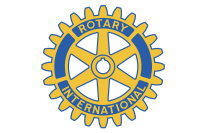Home again: ‘Emissaries of Peace’ returns to Cherokee after a Smithsonian excursion
After a successful five-month run at the Smithsonian National Museum of Natural History, the “Emissaries of Peace: The 1762 Cherokee and British Delegations,” will return to the Museum of the Cherokee Indian and reopen on Jan. 3.
“More people saw our exhibit in five months than a year’s worth of visitors to the Biltmore Estate,” said Ken Blankenship, executive director of the Museum of the Cherokee Indian. “We are very proud that visitors could learn about our people, our culture, and how history helped shape our future.”
The Smithsonian National Museum of Natural History recorded nearly 6 million visitors in 2006. An estimated 2.5 million people saw the exhibit during its stay at the venerable facility from June 27 through Nov. 25.
“Emissaries of Peace” chronicles a peaceful 1762 encounter: the visit of a British delegation to the Cherokee capitol of Echota in eastern Tennessee, after which Cherokee leaders traveled to Williamsburg and London to meet British officials and King George III. At the time, the Cherokees held the balance of power in the southeastern colonies, and the British Crown was courting them as allies against the French. The exhibit uses these events to explore Cherokee and British perspectives of one another’s cultures during the period immediately prior to the American Revolution; the role of the Cherokee in colonial American life; and changes in Cherokee culture that resulted from their interaction with Europeans.
The several hundred artifacts in the exhibit include peace pipes, weapons, eyeglasses, uniforms, clothing, tableware, baskets, jewelry, documents, maps and artwork. The exhibit also is accompanied by a catalog and includes video presentations, interactive displays and small-scale dioramas.
“Emissaries of Peace” was funded by the National Endowment for the Humanities, and received a presidential designation as a “We the People” exhibit. It was the only traveling exhibition produced by members of an American Indian tribe.
Related Items
The Museum of the Cherokee Indian curated the original exhibit, which had about 70,000 visitors during its run at the museum from October 2005 through September 2006. The exhibit then traveled to the McClung Museum in Knoxville, where it remained on display until February 2007. Then, the exhibit made its way to the Smithsonian where it has appeared since last June.
The Smithsonian’s National Museum of Natural History, located at 10th Street and Constitution Avenue in Washington, D.C., welcomed more than 5.8 million visitors in 2006, making it the most visited natural history museum in the world. Opened in 1910, the museum is dedicated to maintaining and preserving the world’s most extensive collection of natural history specimens and human artifacts. It also fosters critical scientific research as well as educational programs and exhibitions that present the work of its scientists and curators to the public. The museum is part of the Smithsonian Institution, the world’s largest museum and research complex.
The Museum of the Cherokee Indian is located at U.S. 441 and Drama Road in Cherokee. Hours are 9 a.m. to 5 p.m. daily except Thanksgiving, Christmas and New Year’s Day. Admission is $9 for adults, $6 for children ages 6-13 and free for children 5 and younger. For more information, including group rates and other discounts, call 828.497.3481 or visit www.cherokeemuseum.org.









